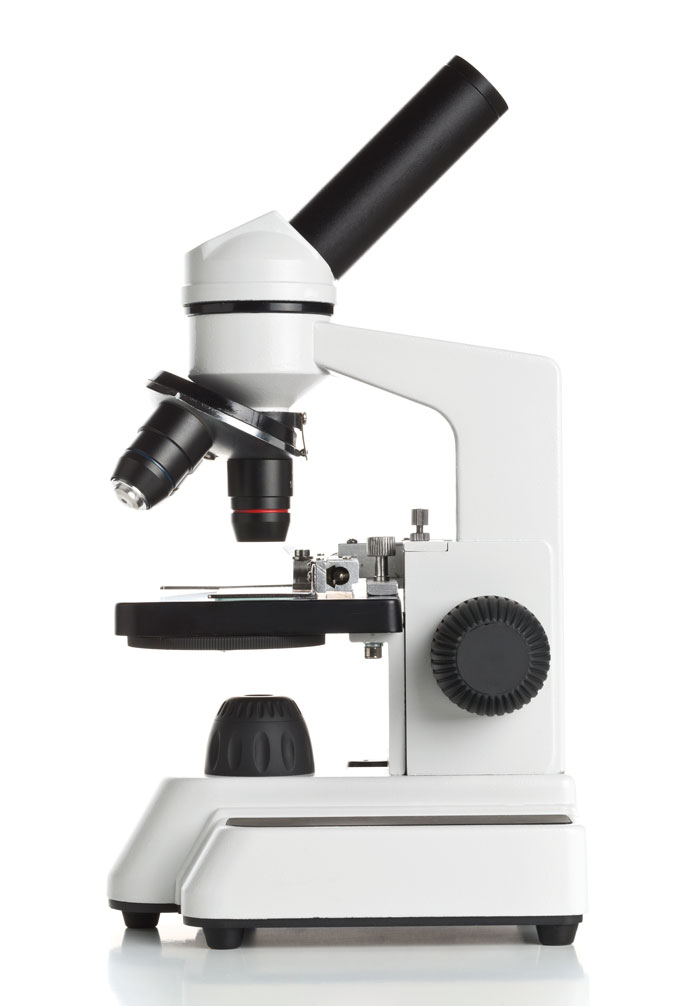12 Mar 2020
Increasing diagnostic testing is good for animal welfare and pracice profits. This is a multibillion-pound market, but are UK practices making the most of the tech and tests they have at their disposal...?

When I began practising veterinary medicine 28 years ago, the most advanced diagnostic tools I had were my five senses and a microscope.
During my first year of practice ownership in 1993, I was fortunate to purchase a second-hand chemistry analyser, semi-automated complete blood count (CBC) machine and an ECG unit. Combined with a Vietnam-era radiograph machine and dip tanks, a well-worn slit lamp and diagnostic hand lens, and a penchant for peering into pee and poo samples, I embarked into the world of high-tech veterinary diagnostics.
Veterinarians today have an abundance of in-clinic analysers, imagers, and immunodiagnostics that rival many human hospitals. However, despite improvements in diagnostic applications, affordability and access, many pets aren’t being tested early or often enough for many treatable and preventable diseases.
Today’s pet owners are incredibly tech-savvy and impressively informed, creating demand for more thorough medical care and predictive analytics for their dogs, cats, and companion animals. The time is now for veterinarians to leverage the power of diagnostic testing to improve patient outcomes, enhance animal welfare, and increase profits.
The global veterinary diagnostics market is huge and projected to grow rapidly. According to industry analysts, it was valued at US$4.4 billion (£3.4 billion) in 2018 and is projected to reach US$9.5 billion (£7.3 billion) by 2026, equalling an annual growth rate of more than 10%.
Leading companion animal diagnostics companies – such as Idexx, Antech and Zoetis – have enjoyed double-digit growth during the past few years. Historically, this growth has been led by advances in imaging diagnostics, such as digital radiography and ultrasound, but over the next five years, the profession is set for a surge in immunodiagnostics.
In-clinic ELISA and other lateral flow tests offer quick diagnoses in an accurate, simple and affordable kit. Small animal veterinarians have used these rapid tests for years to identify heartworm disease, Lyme disease, ehrlichiosis, FeLV and FIV, but the latest generation screens for a variety of intestinal parasites, giardiasis, leptospirosis, bile acids, pancreatitis, feline heart disease and more.
If the market is so hot and innovations are increasing, why are so few dogs and cats being routinely screened for preventable or treatable diseases? In general terms, most US clinics generate between 12% to 23% of gross revenue from examination fees, 11% to 22% from laboratory diagnostics, and 7% to 12% from vaccines. Hidden in those figures is the amount earned from “well pet visits” versus “sick pet”.
When you dive into the revenue stream sources, and eliminate routine heartworm and fecal tests, you discover “preventive lab tests” or healthy pet screening accounts for a mere 2% to 4% of total practice income. In practical terms, many veterinary practices are almost exclusively relying on sick pets and compulsory visits for their economic survival, which brings up an interesting question – what is our job as veterinary professionals?
Our job is to both prevent and treat diseases in animals. Our profession is rooted in food animal production, meaning keeping a herd healthy and curing an ailing animal had to make economic sense for our services to be used. An animal’s “replacement fee” was the foundation of what we could charge to treat or prevent illness.
As we transitioned into caring for pets that had little or no market value, our prior pricing strategies began to fail. Furthermore, no financial incentive existed to keep a farm full of roaming dogs and cats healthy; we focused on fixing any immediate crises, such as a broken leg or laceration, when a generous farmer called.
It wasn’t until the late 1970s that rabies and parvovirus vaccines tilted our professional duties toward preventing disease in dog populations. This legacy of “firetruck medicine”, or an emphasis on treating – rather than preventing – disease, remains rampant in both human and veterinary medicine today.
Thirty years after Kenneth Cooper introduced the concept while at Harvard University, modern human medicine is slowly morphing from “sick care” to “preventive care” – and that’s exactly what young pet parents want from their veterinarian today.
Most pet owners prefer to learn how to keep their pet healthy and thriving, rather than learning that a serious disease can be treated.
While this seems obvious, many pet parents report they aren’t aware that these types of screening tests are available. I’m not debating whether a specific diagnostic test is right for your patients and clients; I am advocating that veterinarians need to do a better job educating the public on disease prevention.
Many reasons exist as to why the current “we treat sick animals, spay/neuter and vaccinate” mindset must be challenged:

Millennial “pet parents” have higher veterinary expectations than baby boomer “pet owners”. Argue about the “quotations” all you want; this represents a fundamental recasting of how pets are valued and treated.
Young pet parents demand that their pets live longer, be healthier and happier, be allowed to accompany them everywhere and have near-human abilities (and accessories).
This generation expects us to prevent disease similar to their own physician (or favourite social media guru). They were raised on annual doctor check-ups, routine prostate and breast cancer testing, and innumerable messages declaring relentless health vigilance to avoid illness.
My personal experience is that general screening diagnostics (basic blood and urine tests) can help identify trends that early intervention can either prevent, delay or reduce clinical diseases. Even when these tests fail to change the ultimate outcome (long-term chronic kidney disease treatment that ultimately ends in mortality), pet parents appreciate the fact that the disease was recognised and treated as well as possible.
What concerns me most is the potential distrust and perceived incompetence created when we diagnose chronic disease in the late stages. What happens to our reputation when the client discovers tests exist that could’ve (and perhaps should’ve) been performed earlier, and that might have altered the disease course? They start to rely less on their local vet and more on Dr Google.
Zoonotic disease is also an important driver for an enhanced emphasis of preventive veterinary diagnostics. We are entering an era of “everywhere pets”.
As we open more public spaces to animal access, preventable diseases must be a paramount concern. Vaccines are the cornerstone of this effort, but regular testing for contagious diseases and parasites is essential to prevent outbreaks. We also must ensure a pet is healthy enough to endure the rigours of travel, hiking in the hinterlands, or romping with a pack of new friends. This is best accomplished with routine preventive diagnostics and examination.
Advances in testing, science and treatments are also at the core of this evolution. Each year science defines new disease biomarkers that end up in laboratory tests, which take decades to gain acceptance.
An excellent example of this dilemma is the multitude of systemic inflammatory biomarkers in humans (and pets, too). C-reactive protein, cytokines (interleukin 6 and so on), erythrocyte sedimentation rate and even older tests such as homocysteine and fructosamine have been around for decades, yet only gained widespread usage over the past 10 years.
Few veterinarians are recommending these types of screening tests to their patients – regardless of age, risk factors or comorbidities. I continue to boldly encourage our profession to evaluate diagnostic test protocols for pre-diabetes screening in dogs and cats. Nearly two decades of research on pet obesity has convinced me that value and validity exist to this commonplace human disease screening.
Earlier disease identification and better interventions should empower every veterinarian to increase routine diagnostic testing.
 If veterinarians fail to embrace preventive medicine and routine disease screening, someone else will.
If veterinarians fail to embrace preventive medicine and routine disease screening, someone else will.
For years I’ve warned if veterinarians don’t provide better and more affordable preventive care and diagnostics, it’s only a matter of time until it goes the way of pharmacy sales. I’m expecting any day to see a venture-capital-backed pet lab test “pop-up shop” in New York City or London.
With competition raging, I implore practice owners and managers to critically assess how to promote and protect their laboratory revenue before it’s too late. For perspective, I wrote a similar column in 1999 on “pharmacy sales in peril”. Wished more clinics would’ve heeded my advice to analyse (and alter) their inflated prescription and preventives pricing models.
I’ll continue to argue that it was our stubborn insistence on doubling our drug costs in the US that created an opportunity for 1-800-PetMeds, VetUK and others to emerge.
In my clinics, we began focusing on providing affordable basic blood and urine screening tests in the mid-1990s. I did this as we began extending our core vaccine schedules to three-years. I wanted my clients to value our services as “health enhancers and preservers” instead of “vaccine providers”.
I reduced my markup on these tests to help offset vaccine revenue losses and allow us to craft a new medical narrative. It went from “go to the vet to get my pet’s shots” to “go to the vet to get my pet’s exam”. I selected a minimum number of tests: heartworm, intestinal parasites, FeLV/FIV, tick-borne diseases, CBC, 10 blood chemistries and electrolytes. We would adjust based on a pet’s age, lifestyle risks and health status.
Approximately 15% of the time (more in older pets), we would encounter an abnormality that led to additional diagnostics. By 2003, we were making significantly more income from these screening tests that we had from vaccines. You can, too.
While I love the heroics of a successful gastric dilatation-volvulus surgery, reversing immune-mediated haemolytic anaemia, or prying an errant fish hook from a paw, my favourite part of veterinary practice is preserving health and enhancing the quality of life for my patients.
Whether it is catching subtle excessive weight gain in a kitten to prevent a lifetime of suffering from obesity, spotting a trend in kidney function to adjust dietary formulation to improve the metabolic environment, or having a conversation about decreasing systemic inflammation by reducing a pet’s stress, that’s where I find my joy.
A need will always exist for veterinary professionals to combat acute disease and injury, but infinitely more opportunity exists to prevent disease, improve the quality of life and extend longevity.
Take this time to reflect on your current practice model, and how it intersects with your client’s wants and needs. Adjusting to the next generation of pet parents – and expanding your emphasis on preserving health and preventing disease – is not only good for your patients, but also for your practice.